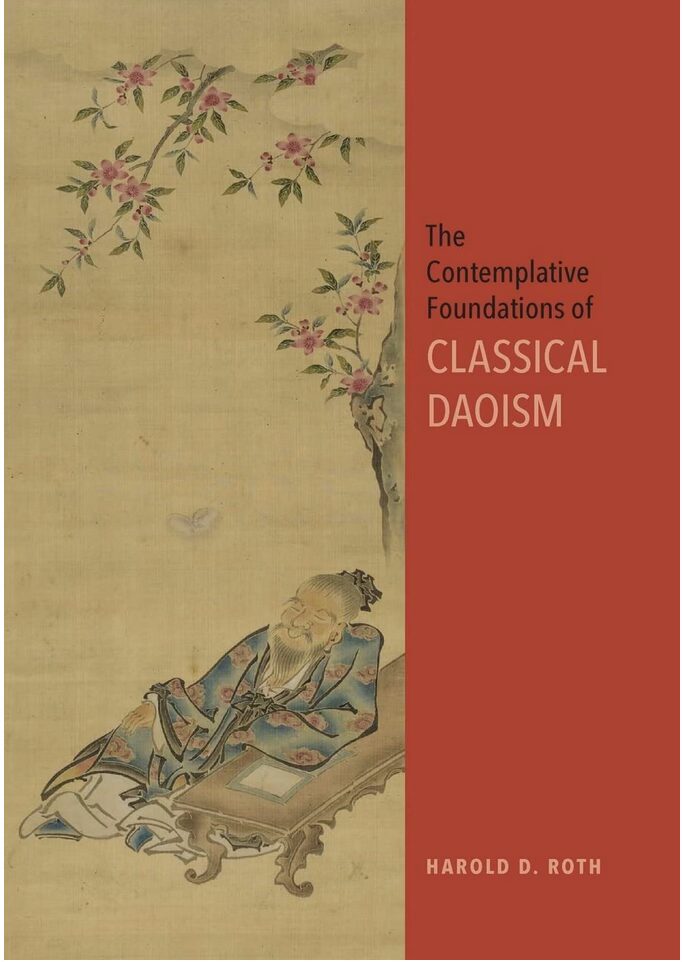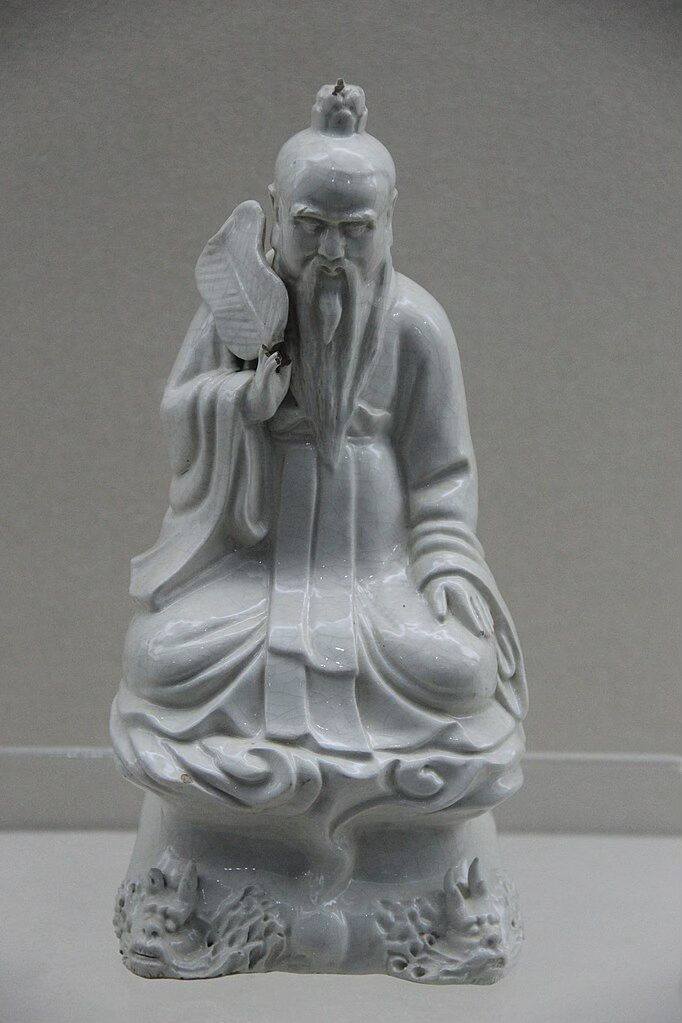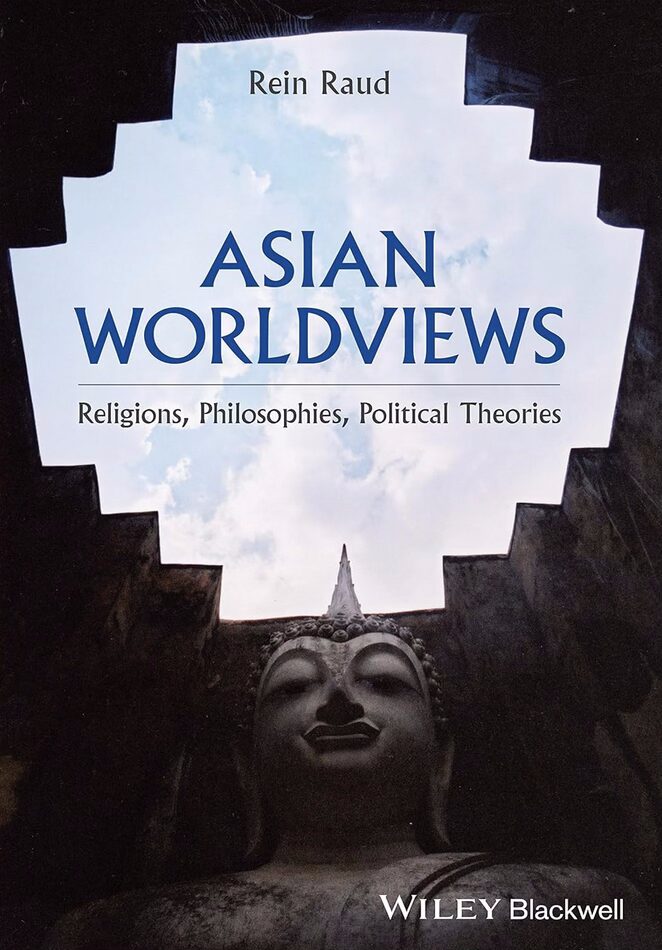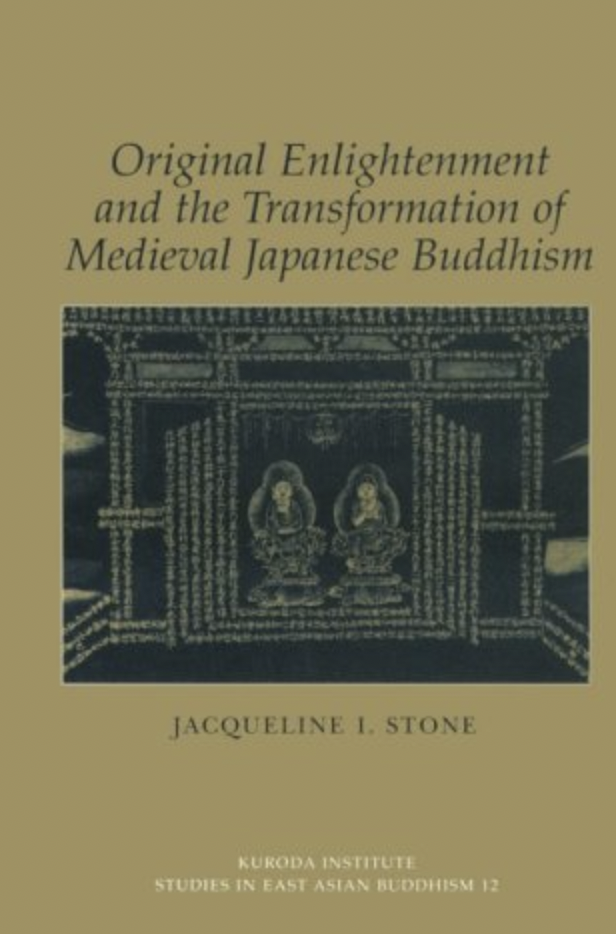“The encounter between Buddhism and Chinese thought is probably the most interesting intellectual synthesis in East Asian history” (Rein Raud).
Contemplative practices in Classical Daoism
As Christine Mollier repeatedly asserts in Buddhism and Taoism Face to Face (2008), the encounter between Buddhism and Daoism in China was marked by a strong competition between the native tradition and the incoming religion. This competition, however, rested on their respective ability to offer “techniques” (shu) to deliver specific results (for instance longevity or protection against witchcraft). As an organised religion, Buddhism was perceived as a threat by Daoist masters still operating in the context of an unorganised movement. So, before looking at the actual encounter, it will be helpful to take a look at what Daoists had already achieved before Buddhism entered the country, that is, during the period referred to as “Classical Daoism.”
In 1999, Harold Roth published Original Tao – Inward Training (Neiye), a work that A C Graham called “possibly the oldest mystical text in China”: its date, as worked out by Roth, is ca 330 BCE – i.e., older than that of the bamboo slips of the Daodejing found in the Guodian Tomb (ca 300 BCE) and, a fortiori, that of the silk manuscripts recovered in the Mawangdui Tomb (ca 168 BCE). Most significantly, the Neiye provided clues regarding contemplative practices not clearly described in the Daodejing. In The Contemplative Foundations of Classical Daoism, published in 2021, Roth broadens the scope of his studies to include, in particular, the Huainanzi (139 BCE), and a strong focus on the Zhuangzi ( ca 300 BCE).

Roth writes: “My research has suggested that, particularly in the case of Daoism, the foundational texts of the tradition were produced within one or more closely related master-disciple lineages whose principal focus was learning and practicing specific techniques (shu). Indeed, these techniques are so central to the tradition that from a very early period, that of the ‘Inner Chapters’ of the Zhuangzi (ca 300 BCE), they are referred to as the ‘techniques of the Way’ (Dao shu). While these eventually came to include methods of political and social organisation and a variety of investigations of the natural world (and their associated yinyang and Five Phase theories), the single most important technique was that of guiding and refining the flow of vital energy or vital breath (qi) within the human organism. This seems to have been accomplished in two possibly complementary ways, the first a kind of active or moving meditation whose postures resembled modern positions in taiji and qigong, and the second a kind of still, sitting meditation that involved regularized natural breathing. It is this second form, which entails the apophatic practice of removing the normal contents of the mind to produce a profound tranquility with a decisively noetic character, that I have called ‘inner cultivation’.”
Classical Taoist texts as elucidation of insights gained through inner cultivation practices
Not only do we now have evidence for a rich contemplative tradition within Classical Daoism, but we also have a better idea of the exact nature of the texts associated with it: their content is not merely “philosophical” as had been argued by those holding on to the traditional contrast between Daoism as philosophy (daojia) and Daoism as religion (daojiao). Scholars now assert that Daoism has always been a religion, and like all religions, it was founded on the insights of early mystics. In Roth’s words: “According to this view, the texts we have come to regard as the foundations of Daoist philosophy are not filled with abstract metaphysical speculation that has no basis in non-discursive experience, but are, rather, works written to elucidate the insight attained from inner cultivation practices and to discuss their practical benefits. This latter aspect would have been particularly critical in late Warring States China in order to persuade local kings of the value of adapting the teachings being advocated and thereby winning their favor and a position within the court from which to continue these pursuits. We have some historical certainty that such conditions did exist, for example, at such disparate courts as those of the states of Qi (ca 320-260 BCE), Qin (ca 241 BCE), and later, the Han state of Huainan (ca 150-122 BCE). Each court produced a book containing collections of teachings from a variety of Daoist and non-Daoist lineages: the Guanzi, the Lüshi chunqiu, and the Huainanzi, respectively, which are all important sources for early Daoist thought.”
“Doing nothing, yet leaving nothing undone.”

Roth continues: “In my research I have referred to this Daoist breathing practice as ‘inner cultivation’. It involves following or guiding the breath while one is in a stable sitting position. As one does this, the normal contents of consciousness gradually empty out, and one comes to experience a tranquility that, as one’s practice develops, becomes quite profound. Eventually one comes to fully empty out the contents of consciousness until a condition of unity is achieved, which is spoken of with a number of related phrases, such as ‘attaining the One’ and “attaining the empty Way.” After this experience, one returns and lives again in the dualistic world in a profoundly transformed fashion, often characterized by an un-self-conscious ability to spontaneously respond to whatever situation one is facing. This new mode of being in the world is frequently characterized by the famous phrase from Laozi: ‘doing nothing, yet leaving nothing undone’. I argue that there is concrete evidence that the author of the Zhuangzi was aware of – and likely followed – such an inner cultivation practice.”
Evidence for inner cultivation practice in the “Inner Chapters” of the Zhuangzi

Roth has identified four passages in the Inner Chapters of the Zhuangzi – i.e., the chapters regarded by scholars as having been authored by Zhuangzi himself (in contrast to the texts written by his disciples) – as evidence for inner cultivation practice.
The first passage is the well-known “‘fasting of the mind’ dialogue in which Confucius teaches Yan Hui. Here Hui is told that he must completely empty out his consciousness to find the Way, and then he will be able to act spontaneously in the world and thereby ‘fly by being wingless’ and ‘know by being ignorant’.” (4/24-A C Graham, Inner Chapters, 27).
The second is “the brief mention of how the Genuine breathe from their heels while the Common breathe from their throats, a passage that also implies that such breathing manifests a profound ‘mechanism of Heaven’ (Tian ji) (6/6-7) … the latter key technical term demonstrates an awareness of the breathing practice outlined in the oldest epigraphic source for inner cultivation, the ‘Duodecagonal Jade Tablet Inscription’.”
“The third passage is the famous dialogue in which Yan Hui ironically ‘turns the tables’ on his master by teaching him how to ‘sit and forget’ (zuo wang):
Confucius asks: “What do you mean, just sit and forget?” To which Yan Hui replies: “I let organs and members drop away, dismiss eyesight and hearing, part from the body and expel knowledge, and merge with the Great Pervader. This is what I mean by ‘just sit and forget’.” (6/92-3 A C Graham, Inner Chapters, 92).
Roth explains: “To let ‘organs and members drop away’ (duo zhi) means to lose visceral awareness of the emotions and desires, which, for the early Daoists, have ‘physiological’ bases in the various organs. To ‘dismiss eyesight and hearing’ (chu cong ming) means to deliberately cut off sense perception. To ‘part from the body and expel knowledge’ (lixing chüzhi) means to lose bodily awareness and remove all thoughts from consciousness. These are all familiar as apophatic aspects of the breathing meditation in other sources of inner cultivation theory. To ‘merge with the Great Pervader’ (tong yu datong) seems to imply that, as a result of these practices, Yan Hui has become united with the Dao. Notice here the anti-metaphysical tendency of this final phrase: it implies the reality of the Way without establishing it as any kind of abstract metaphysical absolute.”
The fourth passage identified by Roth is in chapter 6 where he found evidence of the presence of what he, along with other scholars, calls an “introvertive mystical experience.” It is a “dialogue between the ‘Self-Reliant Woman’ (nüyu), who has ‘the Way of a sage but not the stuff of a sage’, and her disciple, Buliang Yi, who has the reverse qualities. While here we do not find concrete evidence of inner cultivation practice, we see its results … Buliang Yi gradually has gradually stripped away all the contents of consciousness until he has reached an experience of totally merging with the Way. This certainly qualifies as the penultimate introvertive mystical experience. Its presence here indicates the author’s awareness of such an experience.”
Roth further analyses his concept of bimodal mystical experience “introvertive” versus “extrovertive” on the basis of chapter 2 “The sorting that evens things out” (Qi wu lun) which I will present on another page.
It is clear, then, that already in Classical Daoism, there existed a rich tradition of self-cultivation based on a contemplation of the mind emptied of thoughts and sense-perceptions, that parallels the apophatic mystical practices found in other wisdom traditions and religions throughout the ancient period.
Encounter between Buddhist and Chinese thought

I am now turning to Rein Raud’s Asian Worldviews” also published in 2021, to look into the interaction between Buddhist Mahayana thought and Chinese thought, primarily Daoist thought, as texts entered China from 150 CE onwards.
Raud writes: “The encounter between Buddhism and Chinese thought is probably the most interesting intellectual synthesis in East Asian history. Buddhism entered China at about the same time when Christianity started to spread in the Roman empire, and it became one of the dominant worldviews towards the end of the 4th century, again when Christianity had established itself as the primary religion of Europe. Unlike Europe, however, Buddhism never displaced the Chinese indigenous thought traditions, even though it was occasionally viewed with suspicion by Ru [Confucian] scholars. But – again as in Europe – the result of this cultural development was domestic rather than foreign, and just as the thought of St Thomas Aquinas or Martin Luther is a European phenomenon, the philosophical systems of Zhiyi [Tiantai] and Fazang [Huayan] are Chinese, even though in both cases the basic vocabulary is imported from a foreign tradition.” This is a remark that should not be forgotten when assessing the influence of Daoism over Buddhism. As Mahayana Buddhism was already an established religion when it entered China, while Daoism was still in the process of constructing its identity, Buddhist terminology was adopted, which ended up obscuring the native Daoist origin of its views and practices.
Texts and translations
The Buddhist texts that entered China via the Silk Road, obviously needed to be translated into Chinese. And, Raud notes, “Sanskrit is as far removed from classical Chinese by way of grammatical structure and the semantic built-up as any two languages can be.” Sanskrit is known for being heavily “metaphysical” and exceptionally precise, while in Chinese, in Nishi Junzo’s words, “something corresponding to syntax is originally lacking.” The Chinese language does not have a grammatical subject, or verb tenses, or noun declensions. A word can be a noun, a verb or an adjective according to context. “Individual words only float on the surface of meaning/thing-events, and their mutual synthetic connection is not shown in the words as linguistic expressions.” A return to the concrete context is required to make sense of the sentence. Separated by the Himalayas in the north and jungles in the south, Indians and Chinese had lived for millennia in two different cultural worlds, at least as far as their language, writing system, and textual traditions are concerned.
And yet, as Christine Mollier’s Buddhism and Taoism Face to Face argues convincingly, when Buddhist teachings entered China, the Chinese struggled to see a difference between these and their own Daoist teachings. Buddhist sutras were plagiarised by Daoists, and Daoist scriptures were plagiarised by Buddhists. All that was needed was to replace “preached by the Buddha” by “preached by Lord Lao,” and vice versa. Daoists told a story whereby Laozi had gone west all the way to India, and after his death, had been reincarnated as the Buddha. Buddhists, on the other hand, responded by saying that Laozi had been sent by the Buddha to teach Buddhism under the name of Daoism to the Chinese. And the period Mollier’s research covers goes far beyond the first centuries of the common era. It goes all the way to the beginning of the Tang dynasty, and even, in one case, to the 14th century. Mollier, however, focuses exclusively on ritual practices with a specific aim – salvation through complete abstinence from food, protecting oneself from witchcraft, or achieving longevity, and did not include cosmological concepts such as Dao, and mystical practices such as the cultivation of wuwei, zhiran, etc., key concepts associated with Classical Daoism.
Difficulties in translation produced conceptual innovation
Raud writes: “The incompatibility of Sanskrit and Chinese linguistic structures produced serious difficulties of translation and even inspired conceptual innovations. As the texts had scriptural authority for Chinese Buddhists, they obviously needed them rendered into their native tongue with absolute precision, no word omitted, and some particles of Sanskrit could evolve into full-scale philosophical terms as a result. Initial efforts to use Lao-Zhuang vocabulary for Buddhist terms soon turned out to be confusing and gave way to the development of a properly Chinese Buddhist discourse. A by-product of this process was an in-depth analysis of Buddhist concepts and the reinterpretation of Indian ideas in the Chinese context.” Kumarajiva (344-413), to whom, Raud notes, “both Sanskrit and Chinese were acquired languages, is responsible for the creation of a smooth Chinese Buddhist idiom, sufficiently precise theoretical vocability and stock translations of recurring expressions. Several schools emerged as a result that had no counterpart in India, even though they were based on originally Indian texts (or Chinese translations of them).” Raud is referring here to the Tiantai, Huayan, and Chan schools. Tiantai is based on the Lotus Sutra, and Huayan on the Avatamsaka Sutra (“Flower Ornament” or “Flower Garland”). As for the Chan/Zen school, it marked itself out as a school based on the rejection of all texts, with Huineng, the master whose teachings are expounded in the Platform Sutra, being represented tearing up sutras!
Chinese approached Indian ideas through the lens of their own concerns
Raud writes: “It is only logical that the Chinese reception of Indian ideas specifically highlighted the concepts and problems that resounded with the concerns of the Chinese thought traditions. One of these was the question of human nature. The Ru [Confucian] debate about ‘original nature’ – the existence of which was a prerequisite for it being either good or bad – and Zhuangzi’s views on perspective and non-action provided the background against which the Buddhist views on self were interpreted. The Buddhist view of the illusory nature of selfhood resounded well with Zhuangzi, while the idea of ‘Buddha-nature’ and ‘original enlightenment’ as its corollary resembled Mengzi’s view of the ‘sprouts’ of virtues embedded in every human psyche. On the other hand, the ‘absence as presence’ of the Way – the empty hub that connects the thirty spokes to form a wheel (Daodejing chapter 11) resounded well with the Buddhist doctrine of emptiness. The idea that there is a superior metaphysical principle, the ultimate truth, corresponding to the Lao-Zhuang Way on the one hand and the conventional reality of ‘myriad things’, each without a self-nature of its own, may have been a distortion of the original Indian idea but, combined with the theory of Buddha-nature inherent in all beings, it became very influential in Chinese Buddhism and formed the basis of Tiantai and Huayan thought.”
Speaking from a philosophical and contemplative standpoint, Raud comes to conclusions similar to those of Mollier, and thereby confirms that, in spite of the significant differences at the level of culture and language, Chinese Daoists did resonate with key Mahayana teachings. He says: “Proponents of Buddhism were quick to make use of such resemblances, which then quickly led to the Sinification of Buddhism, with its own debates and concerns. Some scholars have even argued that Mahayana, which was the dominant form of Buddhism in China, only came to form a coherent and independent system of thought in China, while in India it always existed in a dialectical symbiosis with Theravada schools of thought. While this is probably an exaggeration, it is true that some issues that were central for Indians did not attract much attention in China, while new topics were raised. The Chinese, for example, were on the whole not very inclined towards reasoning represented by classifications of dharmas and consciousness, even though some efforts in that direction were also made. However, they were much engaged in debates relating to the nature of enlightenment.”
Original Enlightenment

In Indian Mahayana, it was said that “nirvana could only be attained as the result of a long and strenuous effort, which emphasized the importance of monastic discipline.” Practitioners were told that this would require many lifetimes. Raud says that “as early as the beginning of the 5th century CE, the Chinese started to question this theory.” By a rather strange coincidence, a text titled The Awakening of Faith in the Mahayana “appeared” in China in the 6th century, that would provide Chinese Buddhists with a way out of this requirement. The Awakening of Faith is succinctly referred to as the text that conflated the concept of Buddha-nature and the concept of alaya-consciousness in Yogacara, a premise that shaped the teachings of all East Asian schools of Buddhism. It was presented as a text written by Asvaghosa (c. 80-c. 120 CE), an Indian Buddhist philosopher. The text is, however, considered in academia to be an apocryphical work written in 6th century CE either by Paramartha, its supposed translator, or by Bodhiruci, an Indian Buddhist monk living in the Chinese region of Luoyang. In Original Enlightenment and the Transformation of Medieval Japanese Buddhism (1999), Jacqueline Stone considers this text as one of the antecedents of “Original Enlightenment Thought” (Ch benjue, pronounced hongaku in Japan) doctrine, which states that we are all already enlightened, and we need only “actualise” enlightenment in our lives. But the new term also added an important difference. In Indian Mahayana, this potential was metaphorically seen as an embryo (or a womb) that allowed us to gain enlightenment, even if it would still take thousands of lifetimes for it to come to fruition. According to the Awakening of Faith, this potential “came to be seen as a pre-existent reality waiting to be uncovered” by eliminating all desires and attachments. While the Tathagata-garbha doctrine in India had already emphasised the earlier notion of bodhi-citta – the thought of awakening” or “heartfelt aspiration to embark on the Bodhisattva path” – found in the Prajnaparamita sutras, “original enlightenment” went further, making it possible for East Asian Buddhist practitioners to attain enlightenment within a lifetime.
Indian Buddhist schools in China
Two Indian Mahayana schools did attempt to become established in China – the Madhyamaka and the Yogacara. Raud says that “Madhyamaka became known in China as the ‘Three Treatises’ school.” He, however, adds that it combined “Nagarjuna’s theory with Lao-Zhuang views and even some practices taken over from the Dao creed, so that the focus turned somewhat on the ineffable, mystical character of emptiness instead of the Indian stress on the logical deconstruction of all possible discourses on enduring identities and permanent natures of things. However, the influence of Nagarjuna was not restricted to this school only, and his views were seminal also in the development of proper Chinese Buddhist schools.”

Also influential was “the Yogacara, known in China as the “Consciousness-only” school. The founder of this school in China was Xuanzang, who had studied it during his stay in Nalanda. Chinese Yogacara differs from the Indian school in that it asserts more boldly that ‘the three world of [desires, forms and the formless] are nothing but mind’, and identified Buddha-nature with the ‘true mind’, the goodness of human nature in the sense of Mengzi, thus raising it from the status of unrealized potential to an actual presence inaccessible because of delusions. Just as with the ‘Three Treatises’, we find the ideas of the ‘Consciousness-only’ school soon entering broader circulation and influencing the newly emerging Chinese Buddhist schools, which gradually came to eclipse the Indian imports.”
Sources:
Harold D Roth – The Contemplative Foundations of Classical Daoism (2021)
Rein Raud – Asian Worldviews (2021)
Christine Mollier – Buddhism and Taoism Face to Face (2008)
Jacqueline Stone – Original Enlightenment and the Transformation of Medieval Japanese Buddhism (1999)
To be continued on https://buddhism-thewayofemptiness.blog.nomagic.uk/buddhist-schools-founded-in-china-tiantai-huayan-and-chan/
